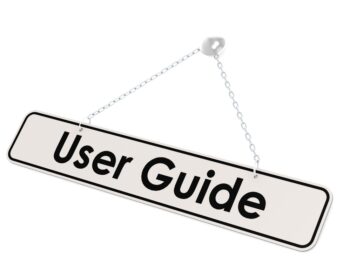What is the most important aspect of workers’ compensation claims. After bringing workers back to work within a three day timeframe and placing them in transitional duty positions, closing claims, of all sorts, is prime. And, closing your most expensive claims even better.
An interesting and successful technique, as seen by these case studies, is to use a job finding service to close expensive claims. Of course, it all depends on the laws in your state, which you check out at http://reduceyourworkerscomp.com/laws_and_regulations.php.
Six Case Studies
Common Statistics
1. The claimant is usually between the ages of 38 and 52, with a high school education, in a physically demanding or repetitive, relatively high-paying blue-collar occupation.
2. Common injuries are carpal tunnel, rotator cuff and lower back/soft tissue damage.
3. Average case age from date of injury – 2 years.
4. Usually released with restrictions 12 months or more.
Some examples of actual cases:
Case One
State: Michigan
Gender/Age: Male/46
Industry: Construction
Education: High School Education, no computer skills.
Date of Injury: 12/03/07
Restrictions from IME: Disabled for any job requiring the use of his left hand and his fingers for forceful grasping, climbing, pulling, lifting over 10lbs on a frequent basis or over 20 lbs on occasion. He is also disabled from working in cold environments or work causing vibrations to the left hand.
Results After 8 weeks: 6 interviews; 3 attended; 3 not attended. We were informed the claimant accepted settlement.
Case Two
State: Texas
Gender/Age: Male/53
Industry: Construction
Education: High School Graduate
Date of Injury: 2006
Results after 12 weeks: 8 Interviews attended: 2 not attended.
Case was closed and settled favorably for the carrier after non-compliance was shown.
Case Three
State: Michigan
Gender/Age: Female/37
Industry: Nurse’s Aid
Education: High School Education. No computer skills.
Date of Injury: 1993
Restrictions from IME: Can return to sedentary work. Exerting up to 10lbs of force occasionally (i.e. activity or condition exists up to 1/3 of the time) and/or a negligible amount of force frequently (i.e. activity or condition exists from 1/3 to 2/3 of the time) or lift, carry push, pull or otherwise move options. Sedentary work involves sitting most of the time, but may involve walking or standing for brief periods of time. Jobs are sedentary if walking and standing are required only occasionally and all other sedentary criteria are met.
Results after 10 weeks: 7 interviews; 0 attended; 7 not attended. We were informed the claimant accepted settlement.
Case Four
State: Illinois
Gender/Age: Male/53
Industry: Construction (foundations)
Education: High School Education, 2 years vocational mechanics school.
Date of Injury: Nov 2006
Restrictions from IME: Lower Back injury. Permanent restrictions of no lifting more than 25-30 lbs with no repetitive bending, twisting or stooping.
Results After 6 weeks: 4 interviews; 0 attended; 4 not attended. Case closed. Claimant refused to get back operation allowing him to return to his former occupation as foreman. Back surgery scheduled.
Case Five
State: Maryland
Gender/Age: Male/34
Industry: Transportation (truck driver)
Education: High School Education
Date of Injury: July 2008
Restrictions from IME: Non-sedentary position, no jolting or vibration pressure to lower back.
Results After 14 weeks: 8 interviews; 3 attended; 5 not attended. Spoke to Claims adjuster. She said she was very pleased with the results and "got what she needed." No other details provided.
Case Six
State: North Carolina
Gender/Age: Male/55
Industry: Not given
Education: High School Graduate
Date of Injury: 2007
Restrictions from IME: No lifting above head of 50 lbs or more.
Results After 15 weeks: He went to the first 10 interviews and stopped going. His attorney requested copies of each job notice prior to claimant going on interview. HR reported he was poorly dressed on the interviews and failed to completely fill out interview application forms. We were informed case was settled.
There is no question closing case files reduces the cost of work comp. By using a job finding or job location service, the employers closed these six cases. Documentation of the “effort” or non-effort of the employees clearly demonstrated an unwillingness to return to work, providing the ammunition needed to terminate (or settle) workers’ compensation benefits.
Note from Editor: Many employers do not want return-to-work programs, and that is their perogative. This type of service is a solid alternative for both job placement off-site and terminating benefits of employees who do not wish to return to work and do not cooperate with return-to-work efforts.
Katrina Paglierani of National Job Finders finds jobs for injured employees, performing job searches for injured workers’ with permanent restrictions to locate REAL jobs. National Job Finders sets up the interviews, notifies all parties, and follows up with their human resource contacts at the prospective employers. Contact at: Katrina@NationalJobFinders.com or 1-800-225-4070.
Podcast/Webcast: How To Prevent Fraudulent Workers' Compensation Claims Click Here http://www.workerscompkit.com/gallagher/podcast/Fraudulent_Workers_Compensation_Claims/index.php
WC Books: http://www.reduceyourworkerscomp.com/workers-comp-books-manuals.php
TD Calculator: www.reduceyourworkerscomp.com/transitional-duty-cost-calculator.php
WC Calculator: http://www.reduceyourworkerscomp.com/calculator.php
TD Calculator: www.reduceyourworkerscomp.com/transitional-duty-cost-calculator.php
WC Calculator: http://www.reduceyourworkerscomp.com/calculator.php
Do not use this information without independent verification. All state laws vary. You should consult with your insurance broker or agent about workers' comp issues.
©2009 Amaxx Risk Solutions, Inc. All rights reserved under International Copyright Law. If you would like permission to reprint this material, contact Info@WorkersCompKit.com














